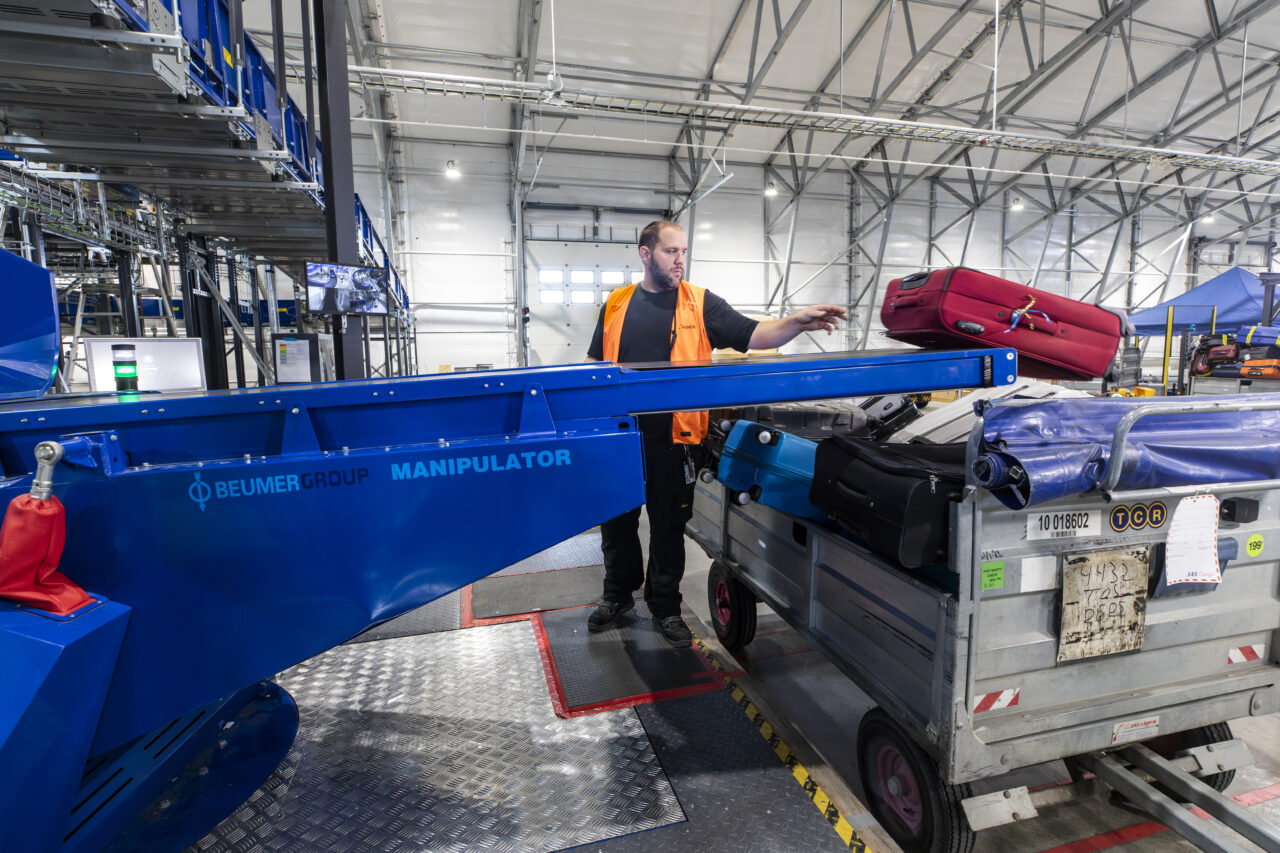Bad fit for baggage tracking
Up until the cut-off point, modern BHS technology such as ICS has meticulously guaranteed that the baggage’s journey has been fully tracked and traced through security screening and sortation.
However, the changeover leaves airport operators struggling to meet the requirements from baggage tracking once the bag leaves the automated system.
Given the advanced nature of the technology that has ensured it will end up at the bottom of the correct chute, it seems anachronistic to revert to manual handling.
New area of interest for BHS providers
Historically, BHS providers have always been interested in ground handling system processes – but it has not been the focus of their business. Today, though, they are learning fast.
After all, BHS and ground handling system operators share the same need: automation to replace the drain of labour brought on by the Pandemic.
Ground handling operators, impressed by BHS advances, are approaching baggage system operators about how they can help them automate their processes.
These include the final sorting of the baggage at the make-up area, loading it onto the ULD containers or dollies, and then transporting it to a handover point outside, from where it will be loaded to the aircraft.
The room for improvement in the ground handling system is vast: called in to assist, BHS providers can see many of its processes can be performed in a different and more efficient way.
Not obvious who should invest in ground handling system tech
Nevertheless, it is not obvious which party should be investing in automating it.
After all, why would the airport pay for automation that the ground handler uses? And why would the ground handler pay for ground support equipment for airports if its continued use is contingent on it extending a contract?
Let’s say, for example, that a ground handling service expresses an interest because automation could save time and eliminate labour costs.
Neither the negotiation, manufacturing nor installation is a quick process, and all the while the clock is ticking on the ground handling service’s contract.
Ideally, the BHS provider wants to provide technology that factors in the big baggage operational picture, but striding this cut-off point are two owners – the airport and the ground handling operation employed by the airline – which makes it problematic.
AGVs and ULD batch-building
Conventional airport baggage handling relies on a vast number of tugs, trolleys and drivers to transport baggage from make-up to the ramp of the aircraft.
This is a complex operation demanding tight cooperation between the operators on the ramp and the operators in the make-up or arrivals halls.
In the airports of the future the baggage process may be extended to automate the movement of unit loading devices (ULDs) and carts by using automated guided vehicles (AGVs).
Supporting ULD handling in the ground handling system with AGVs will increase the efficiency of the operation at the airport apron.
Significant trials with self-driving vehicles
Probably the most significant deal yet signed in the emerging sector was an innovation partnership agreed by Avinor, the operator of Norway’s major airports, to explore ways of automating the ground handling system.
Innovative solutions will be trialled in a live environment at Oslo Airport, where Avinor has built a dedicated project test centre, for three months from late 2024.
The overall aim for Avinor is to:
- increase the efficiency of the baggage handling process
- remove repetitive heavy lifting duties undertaken by baggage handlers
- automate a part of the baggage handling process that has remained unaltered for more than 50 years.
Meanwhile, the trials with use of driverless vehicles to transport luggage between the baggage make-up and the aircrafts is increasing.
At Changi Airport in Singapore, its operator has been testing new driverless baggage transfer ‘tractors’, which are loaded with ULDs and Cincinnati/North Kentucky International Airport deploys self-driving vehicles to transport passenger baggage and cargo.
TAKEAWAY
Ground handling operators, in dire need of automation to alleviate labour shortages, are increasingly approaching BHS providers for solutions. Accordingly, the ground handling system, previously a path less travelled for BHS providers, is now an area of interest with huge potential.





